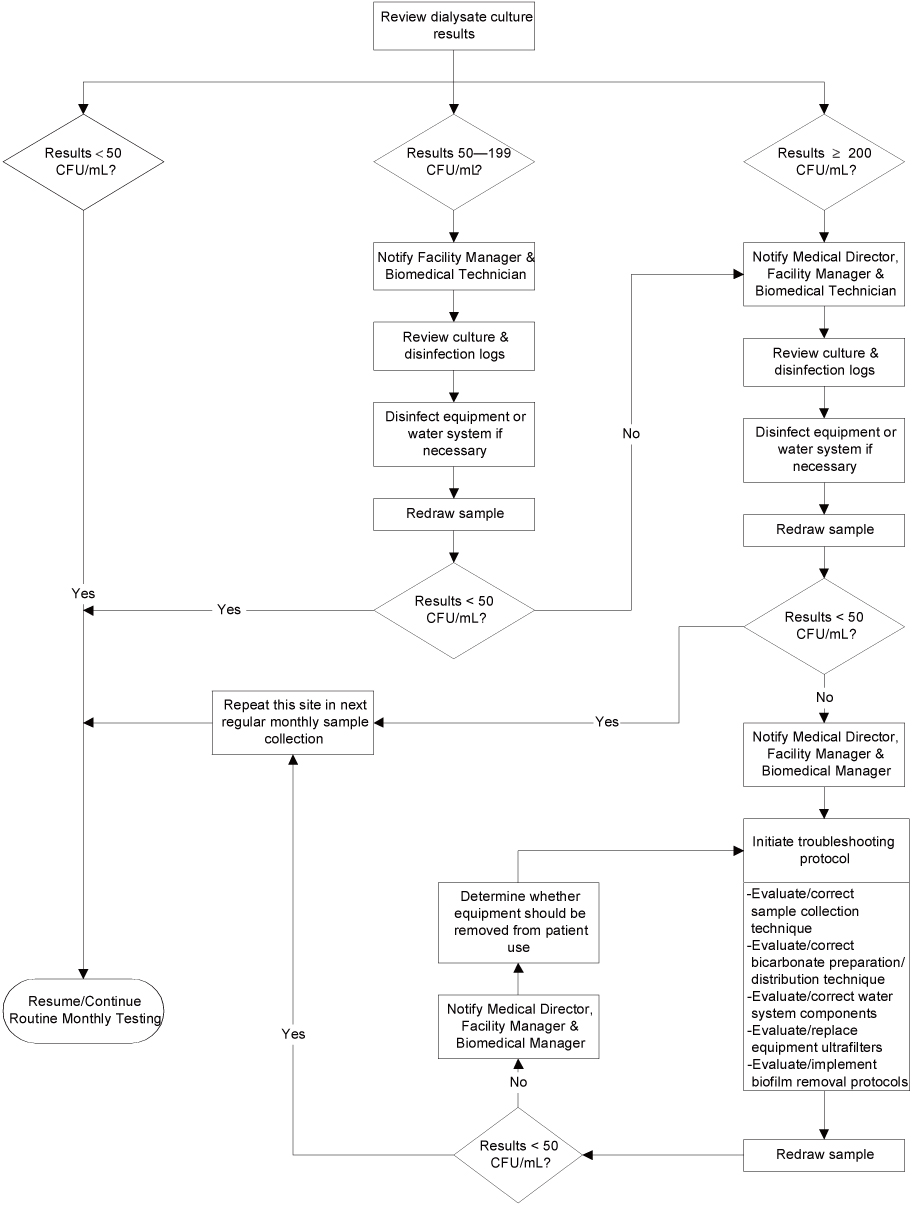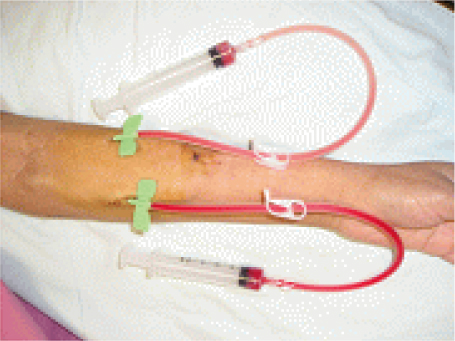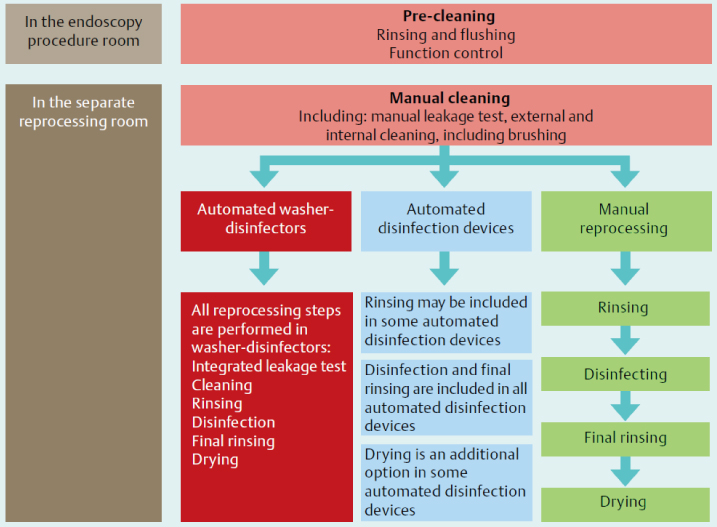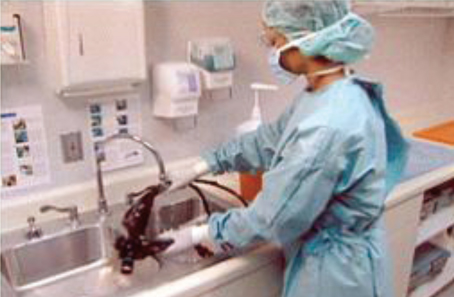Hanyang Med Rev.
2011 Aug;31(3):167-176. 10.7599/hmr.2011.31.3.167.
Infection Control for Hemodialysis and Endoscopy Unit
- Affiliations
-
- 1Department of Nursing, Gachon University of Medicine and Science, Incheon, Korea. jschoi408@empal.com
- KMID: 2168194
- DOI: http://doi.org/10.7599/hmr.2011.31.3.167
Abstract
- Patients undergoing dialysis are already at risk of certain types of infections resulting from underlying disease or condition. Dialysis-associated infections include access site infection, bacteremia, peritonitis and blood-borne pathogens. So, to prevent these infections, infection control should be recommended; hemodialysis water processing and distribution system: disinfection of dialysis machines; and step for prevention of blood-borne pathogen transmission in the dialysis setting. The causes of endoscopy associated infection are multi-factorial. So, to minimize the risk of infection, healthcare workers must ensure that equipment is designed and maintained properly and that guidelines for reprocessing are strictly followed.
Keyword
MeSH Terms
Figure
Reference
-
1. Price CS, Hacek D, Noskin GA, Peterson LR. An outbreak of bloodstream infections in an outpatient hemodialysis center. Infect Control Hosp Epidemiol. 2002. 23:725–729.
Article2. Choi JS. Korean Society for Nosocomical Infection Control. Hemodialysis unit. Infection control and prevention in healthcare facilities. 2011. 4th ed. Seoul: Hanmibook;207–223.3. Association for the Advancement of Medical Instrumentation. American National Standard: Dialysate for hemodialysis. 2004. Arlington (VA): AAMI;2425. Report No. ANSI/AAMI RD52:2004.4. Association for the Advancement of Medical Instrumentation. American National Standard: Water treatment equipment for hemodialysis application. 2009. Arlington (VA): AAMI;5–8. Report No. ANSI/AAMI RD62:2006/A1:2009.5. Association for the Advancement of Medical Instrumentation. American National Standard: Concentrates for hemodialysis. 2006. Arlington (VA): AAMI;3–8. Report No. ANSI/AAMI RD61:2006.6. Garcia-Houchins S. Carrico R, Mayfield J, Adam L, Meylan M, Aureden K, Miller D, editors. Dialysis. APIC text of infection control and epidemiology. 2009. Washington DC: Association for Professionals in Infection Control and Epidemiology, Inc;1–17.7. Association for the Advancement of Medical Instrumentation. American National Standard: Reprocessing of hemodialyzers. 2008. Arlington (VA): AAMI;5–10. Report No. ANSI/AAMI RD47:2006.8. Recommendations for preventing transmission of infections among chronic hemodialysis patients. MMWR Recomm Rep. 2001. 50:1–43.9. Beilenhoff U, Neumann CS, Rey JF, Biering H, Blum R, Cimbro M, et al. ESGE-ESGENA Guideline: cleaning and disinfection in gastrointestinal endoscopy. Endoscopy. 2008. 40:939–957.
Article10. SGNA Standards: standards of infection control in reprocessing of flexible gastrointestinal endoscopes. Gastroenterol Nurs. 2010. 33:70–80.11. Nelson DB, Jarvis WR, Rutala WA, Foxx-Orenstein AE, Isenberg G, Dash GP, et al. Multi-society guideline for reprocessing flexible gastrointestinal endoscopes. Dis Colon Rectum. 2004. 47:413–420. discussion 20-1.
Article
- Full Text Links
- Actions
-
Cited
- CITED
-
- Close
- Share
- Similar articles
-
- Factors Influencing Hemodialysis Unit Nurses' Compliance with Standard Precautions using Hierarchical Linear Modeling
- Updates on the Disinfection and Infection Control Process of the Accredited Endoscopy Unit
- Accredited Endoscopy Unit Program of Korea: Overview and Qualification
- Knowledge on Blood-borne Infections, Compliance and Barriers on Blood-borne Infection Control among Nurses in Hemodialysis Units
- A Canadian Experience of Infection Control





